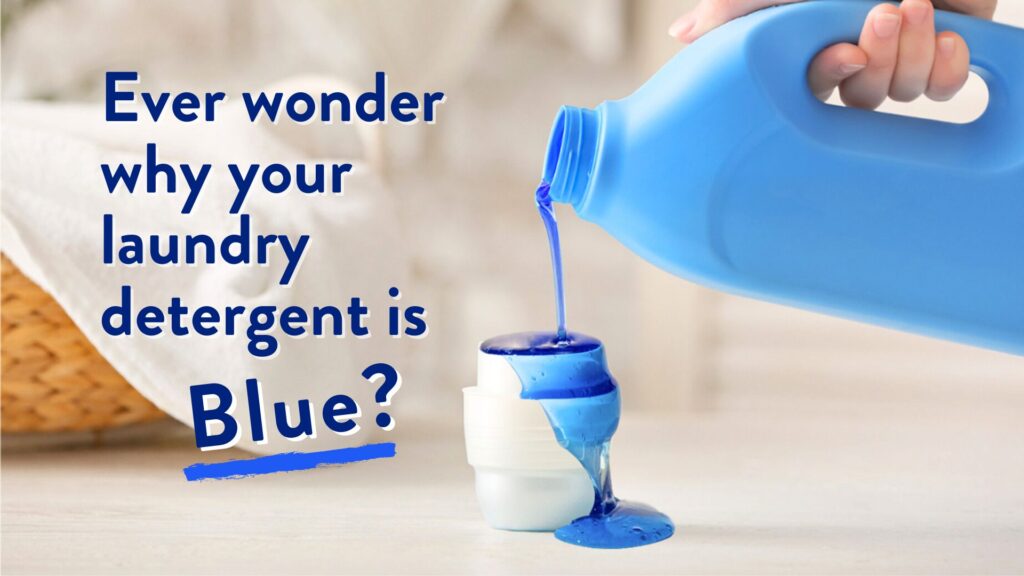
Have you ever noticed that your laundry detergent often has a distinct blue hue? This isn’t just a random design choice; there’s a scientific reason behind it. The blue color in many detergents comes from the addition of optical brighteners, special chemicals that play a crucial role in making your clothes appear whiter and brighter.
This article will delve into the world of optical brighteners, exploring their function, benefits, and how they impact our perception of cleanliness. We’ll uncover the science behind these fascinating compounds and shed light on why laundry detergent often boasts a vibrant blue color.
Optical Brighteners in Laundry Detergent
Optical brighteners are fluorescent compounds that are intentionally added to various cleaning products, including laundry detergents, fabric softeners, and even some dishwashing liquids. These chemicals are designed to enhance the appearance of whiteness by counteracting the natural yellowing effect that occurs over time on fabrics.
The blue color in many detergents is a direct result of these optical brighteners. While they don’t actually remove stains or dirt, they work by absorbing ultraviolet (UV) light and re-emitting it as visible blue light. This blue light interacts with the fabric, making it appear brighter and whiter to our eyes.
How Optical Brighteners Work
Optical brighteners function through a process called fluorescence. When exposed to UV light, which is invisible to the human eye, these compounds absorb the energy and become excited. As they return to their original state, they release this absorbed energy as visible blue light. This emitted blue light effectively masks the yellowish tones that can develop in fabrics due to aging, washing, or exposure to sunlight.
The effectiveness of optical brighteners depends on several factors, including the type of fabric, the concentration of the brightener in the detergent, and the intensity of UV light exposure. Different types of optical brighteners are designed to work best with specific fabrics, ensuring optimal results for various materials like cotton, polyester, or wool.
Benefits of Using Optical Brighteners
The primary benefit of using optical brighteners is their ability to enhance the perceived whiteness of fabrics. This can be particularly beneficial for white clothes that tend to yellow over time, making them appear fresher and cleaner. Beyond enhancing whiteness, optical brighteners can also contribute to a brighter overall laundry experience.
By masking dullness and minor stains, they create the illusion of a more thoroughly cleaned load. This can be especially appealing for consumers who prioritize the visual appearance of their laundry. Additionally, some studies suggest that optical brighteners may help protect fabrics from UV damage by absorbing harmful rays before they reach the fibers.
Perception vs. Actual Cleanliness
It’s important to note that while optical brighteners effectively enhance the appearance of cleanliness, they do not actually remove dirt or stains. They simply mask these imperfections by altering our perception of color. Therefore, it’s crucial to continue practicing proper laundry habits, including pre-treating stains and using appropriate detergent for different types of fabrics.
Optical brighteners should be viewed as a complementary tool that enhances the visual appeal of clean laundry, rather than a substitute for thorough cleaning practices.
Conclusion
The blue color in many laundry detergents is not just a cosmetic choice; it’s a result of the addition of optical brighteners, fascinating compounds that enhance the perceived whiteness of fabrics. These fluorescent chemicals absorb UV light and re-emit it as visible blue light, effectively masking yellowing and dullness. While they don’t replace actual cleaning, optical brighteners contribute to a brighter and more visually appealing laundry experience.
Understanding how these compounds work allows us to appreciate their role in enhancing the appearance of our clothes while remembering that proper cleaning practices remain essential for truly clean and hygienic garments.
